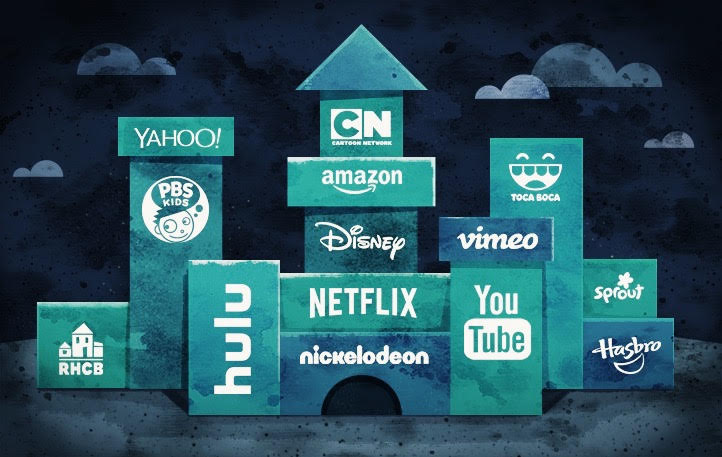CloudKid Says Goodbye
In 2009 when we started CloudKid, we set out to create an artist-driven studio that took risks, collaborated with top talent, and found the sweet spot where technology meets creative. Above all, we wanted freedom to work on internal projects that inspired us and challenged us to grow, even in the thick of client productions. Our initial team was small, dedicated and very passionate about children’s media.
Fast-forward six years, we fulfilled that vision and achieved many more successes – we were nominated for four Emmy awards, built an amazing team and network of artists and collaborators from all over the world, partnered with the top children’s media companies, landed a TV development deal, and even generated $1.6 million revenue in 2015. And while CloudKid’s run has been impressive, our growth has required us to focus exclusively on a myriad of client projects to sustain the studio.
Over the last year, it became apparent that we’ve veered from our original vision and goals, and running a service-based studio was not sustainable for us or our employees. Recently, a friend told us “enough is a feast” and we could relate. We live in a bigger-is-better culture, and we’re told to keep going, keep building, keep making, but to what extent? With so many other studios generating a dizzying amount of kids content for the same platforms, we asked ourself if anyone (other than our clients or employees) would notice if CloudKid ceased to exist. The answer was no. We have made the very tough decision to walk away from CloudKid while we’re on top.
While the decision is a bittersweet one, we’re extremely excited to announce we have accepted an offer to join social robotics startup, Jibo. Jibo has the potential to positively transform our relationship to technology in the home, classroom and beyond, and for that reason we feel like it’s a once in a lifetime opportunity. Moreover, Jibo is a perfect fit for our team: It enables us to explore innovative ways of telling stories and building experiences no one has seen; represents a fun and thrilling creative and technical challenge; and gives us the opportunity to work with literally some of the smartest people in the world. Most of all, we’ll be building a fucking robot!
Over the next two months, we will be fulfilling all our existing commitments to our wonderful clients and contractors, end on a high note, and make the transition to Jibo.
Shout-outs!
Several years ago after moving into our current space, CloudKid began a weekly tradition of shout-outs during our Friday team lunch. This popcorn-style sharing organically began as a way to acknowledge the hard work between peers that often went unmentioned in the flurry of production. The generosity that CloudKids showed each other became one of our most successful achievements. In this tradition, we’d like to give some final shout-outs to those individuals and organizations that supported us creatively, professionally and personally.
First, to our wonderful clients: you paid our bills, kept us fed, challenged us, and enabled us to do what we love for a living. A “front hug” shout-out goes to Houghton Mifflin, Random House, WGBH, Sesame Workshop, Fred Rogers Company, Spiffy Pictures, Cartoon Network, Nickelodeon, Scholastic, PBS KIDS, Hasbro, Sprout, 9ate7 Productions, and Romotive.
Second, to our amazing friends at PBS: you have inspired us to do some of our best work, you’ve allowed us to take risks making games and producing animation, and to help define new formats for kids. Without your support, CloudKid would not have existed or flourished. For that, we will always be indebted to the power of public media. An “ugga mugga” shout-out goes to Linda Simensky, Sara Dewitt, David Lowenstein, Jen Rodriguez, Karin Jue, Jer Roberts, Aaron Morris, Shannon Bishop and Chris Bishop.
To all those who provided these humble and eager art school graduates with business advice and helped us navigate the ins-and-outs of running a business: A “Warren Buffett” shout-out goes to Bill Shribman, Nancy Kay, Steve Schlafman, Andrew Goloboy, Laurie Megery, Jay Francis, Kevin Morrison, Scott Scornvacco, and Scott Nash.
To our network of creative offsite collaborators: you’ve helped us pull off projects intended for industry titans and wouldn’t have been able to do it without you. You trusted us with your creations and made our jobs so much easier. A “brotha from anotha motha” shout-out goes to Adam Shonkoff, Daniel Koren, Joe Gaudet, Joe Pleiman, Brian Smith, Dan Flynn, Jon Renoni, Isaac Orloff, John Loren, Geoff Marian, Allison Craig, Patt Kelley, and Louie Zong.
A “tear-soaked” shout-out goes out to each and every CloudKid, no matter where you are today. You’ve been like family and have made this journey all worth it. You took enormous risks and believed in what we were doing. Your creative passion and enthusiasm inspired us all and made everything we did better. In particular, we’d like to give Mike Annear and Kendra Mattozzi a special “poo on the wall” shout-out for being with us since day one. These two took the biggest leap of faith and for that we are eternally grateful.
Last but not least, a “home is where the heart is” shout-out goes to our families, partners, roommates, friends, and pets who put up with the ebbs and flows of running CloudKid. You kept us grounded and supported us unconditionally through the challenging times and cheered us on during the exciting ones.
Thirteen years ago, we met in the MassArt café and decided to collaborate on a small project. That small project became the genesis of a friendship and CloudKid. Just as the creative process brought us together, it has connected us with so many amazingly kind, thoughtful, and creative people over the last six years. And while CloudKid will fade, these friendships will remain for the rest of our lives. So, this isn’t goodbye, it’s catch you on the flip side.
– Dave and Matt
















